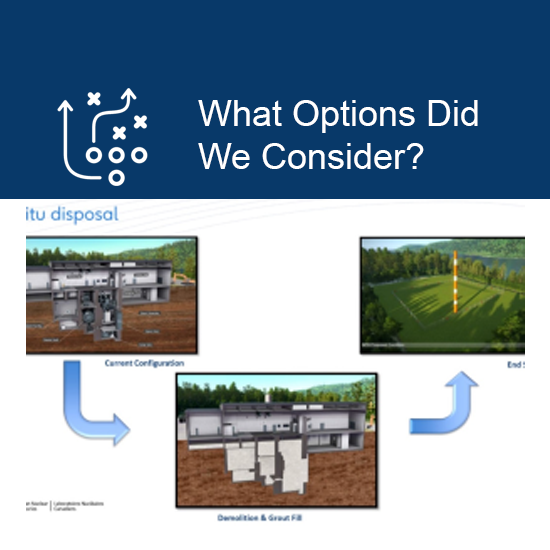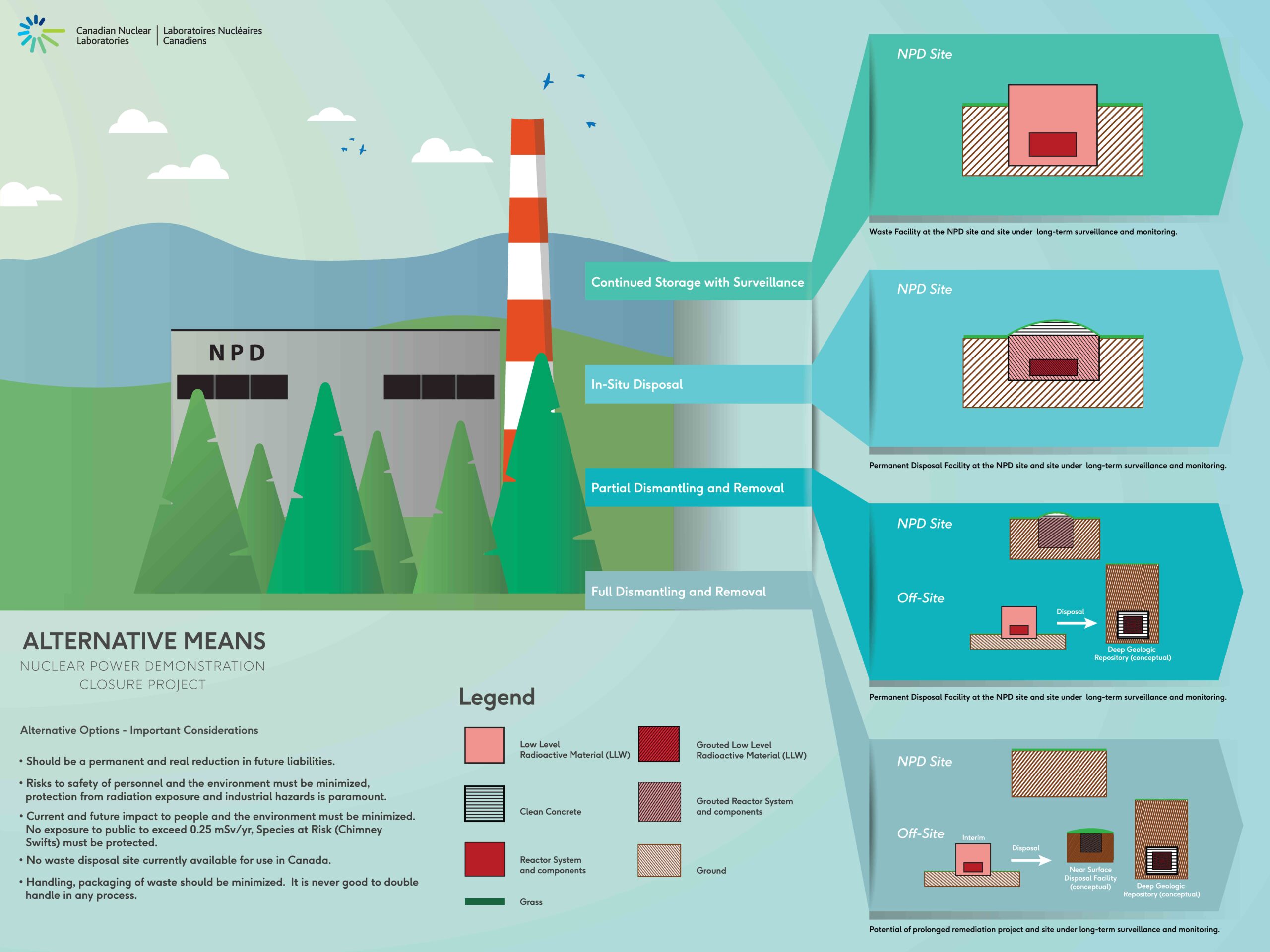What options did we consider?
While planning for the permanent closure of the NPD facility, CNL has considered several options for closing the site and decommissioning, including:
- continued storage with surveillance
- in-situ disposal
- partial dismantling and removal, and
- full dismantling and removal of the reactor and components.
Each of these options has pros and cons and through our various engagements, CNL was asked to provide more detail in the Environmental Impact Statement (EIS) on how it chose the in-situ disposal method as the preferred technique for completing the closure of the NPD reactor. CNL has added quantitative assessments of the options considered to the EIS, and also updated the scenarios to include a new disposal facility becoming available during the institutional control period. Overall, CNL considers the in-situ disposal method to be the safest and preferred option.
In-situ disposal means carrying out disposal ‘in place’. This method will safely contain the reactor systems and facility structure below grade at NPD. The overall goal of in-situ disposal is to contain and isolate the remaining waste inventory to prevent the release of radioactivity to the environment.
It ensures the lowest potential risk to the environment in comparison to other alternatives (such as, interim storage of the waste above-ground, which would be required after partial or full removal). This is because with in-situ disposal, the reactor systems and facility structure are safely contained in their current location below-grade - in bedrock -which limits long-term risks in the case of both normal and extreme events, like severe flooding or earthquakes. It also limits the risks that may be associated with the removal, handling the waste more than once and storage of waste elsewhere.
Webinar: Learn more about the NPD Alternate Options
June 25, 2020 - YouTube
A Proven Technique
In-situ disposal has been used successfully at a number of nuclear sites worldwide since the 1960’s.
The nuclear industry has successfully used in-situ disposal to safely decommission power and research reactors such as, Hallam in Nebraska, Savannah River Site P and R, the Experimental Breeder Reactor (EBR) II in Idaho, Boiling Nuclear Superheater (BONUS) Reactor Facility in Puerto Rico and Piqua in Ohio. Two of these examples were decommissioned in the 1960’s and the 60-year performance of these facilities demonstrates the strength of this approach at protecting people and the environment.
Furthermore, the radioactive inventory that the NPD Closure Project proposes to dispose of at the NPD site is much lower in comparison to the radioactive inventory of the waste disposed of at other facilities.



